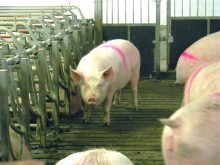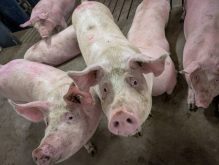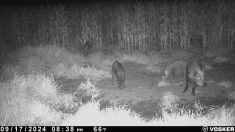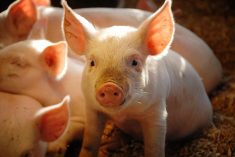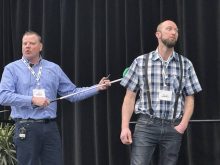Awatershed in sow housing is coming to Manitoba in the next five years and pork producers are unprepared, says a University of Manitoba swine specialist.
Many hog barns will soon have to retool their aging equipment, including gestation stalls, said Laurie Connor, who heads the University of Manitoba’s animal science department.
Producers need to decide whether to replace their gestation crates or switch to alternate forms of sow housing, she told an audience at Hog and Poultry Days.
Unfortunately, most producers aren’t sure which way to go and time is short, said Connor.
Read Also
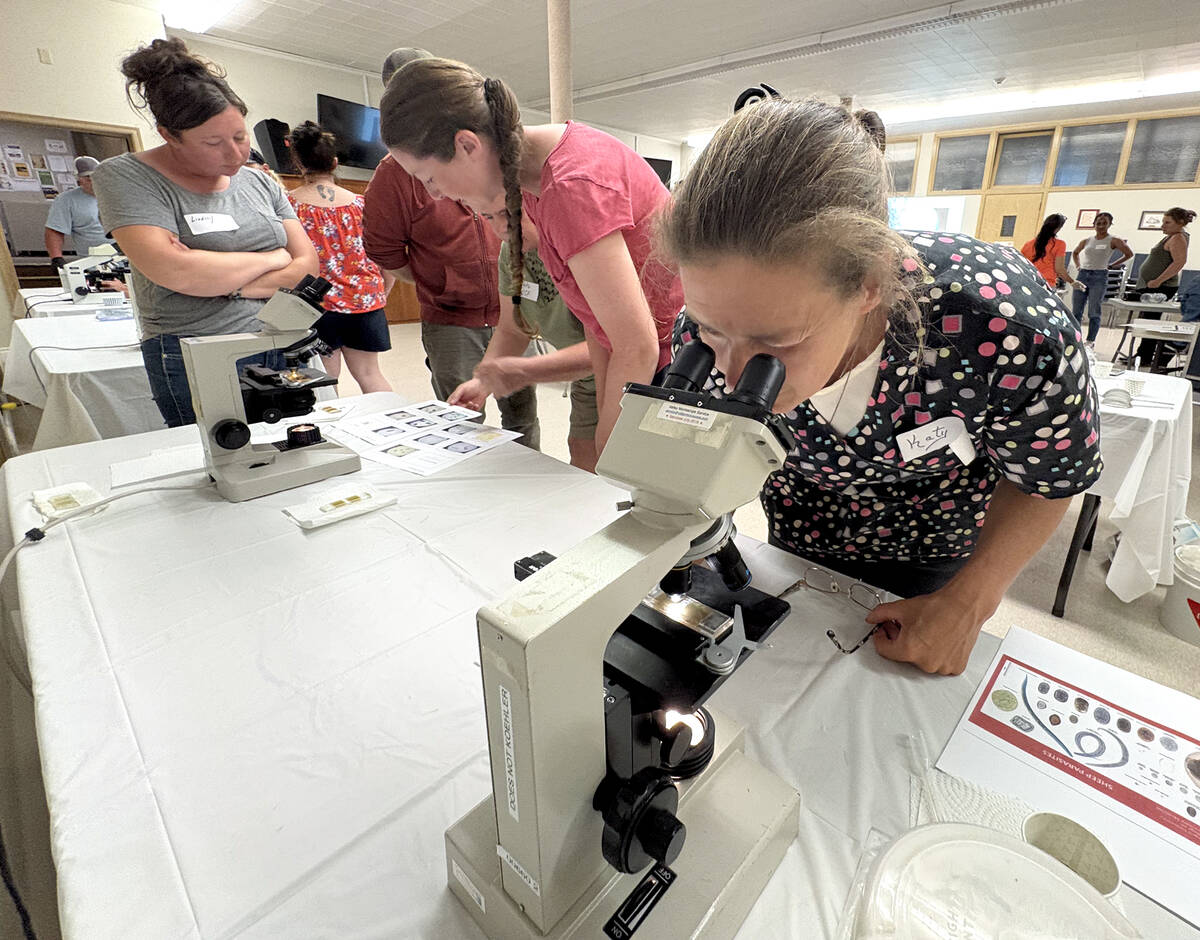
Smart deworming for sheep starts with individual fecal egg counts
Fecal egg count tests are one step to managing dewormer resistance and managing sheep parasites on Canadian sheep farms to maintain flock health.
“There isn’t a lot of time for them to make a decision as to, what option are we going to convert to?” she said after her presentation during the annual industry trade show held in the Winnipeg Convention Centre.
Sow stalls, an industry standard, have come under increasing pressure in recent years over animal-welfare concerns.
Europe is in the process of phasing them out. Several U.S. states have voted in public referenda to eliminate them. Here in Manitoba, a Winnipeg Humane Society campaign to ban gestation crates has collected over 10,000 signatures in five years.
Connor said several factors, including demands from trading partners, may push the industry in the direction of open housing.
But the decis ion about whether or not to convert to group housing is driven more by economic reality than public pressure, she said.
Many of Manitoba’s hog barns were built during the industry boom of the 1990s. The buildings themselves have a much longer structural lifespan than the equipment, which usually needs replacing after 15 years.
So producers must decide within the next five years or so what kind of sow housing system they want, said Connor.
The decision will be an expensive one. Industry estimates put the cost of converting a 3,000- sow operation to group housing at over $1 million.
Either way, the decision must be made and producers need more information to make it, said Connor.
Some of that information will come from the university’s National Centre for Livestock and the Environment (NCLE) where researchers compare conventional and alternative sow group housing systems.
Projects aim at developing designs that maintain the health and well-being of sows while ensuring they get adequate feed for acceptable body condition at farrowing, Connor said.
In her presentation, Connor said gestation stalls are designed for ease of management. Sows get individual feeding attention and are free from the bullying that group housing can produce.
At the same time, stalls prevent sows from expressing one of the so-called five freedoms for animals: the freedom to express normal behaviour, such as foraging, rooting and social grouping.
As a result, group housing is seen as welfare friendly because is provides freedom of movement and social interaction, Connor said.
She said many large Manitoba producers recognize that moving to some form of group housing for pregnant sows is necessary.
Major pork suppliers, including Maple Leaf in Canada and Smithfield in the United States, have announced plans to phase out gestation stalls by 2017.
The problem is that large sow herds are seen as less manageable in group housing systems, Connor said.
The challenge is to combine the advantages of the stall system with those of group housing in an affordable alternative, she said.
It’s won’t be easy, Connor admitted.
“Economically, it’s a phenomenal challenge. But we like to think where there’s a will, there’s a way.” [email protected]






